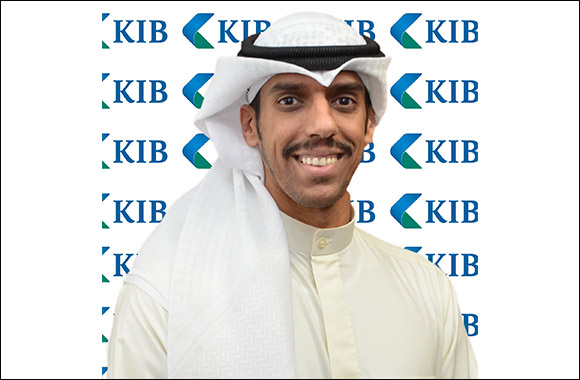
Kuwait, 14 June 2023: Kuwait International Bank (KIB) recently concluded its first quarterly report for the year 2023. The Q1 report revealed relative stability in the commercial sector’s prices across Kuwait City in comparison to the surge in prices that marked the same period of the previous year; a logical outturn that reflects the current economic status quo of Kuwait’s real estate market. Commenting on the 2023 Q1 report, Eng. Ahmad Al-Yaqoub, Assistant Manager of the Real Estate Appraisal Department at KIB, explained that the increased cost of real estate financing, coupled with the cost of building materials and labor, mainly prompted a decrease in the purchasing demand and generally impacted the economic feasibility of investing in real estate, especially in high-cost properties. Furthermore, the increased profit rates on bank deposits, which are directly influenced by the increase in the Central Bank of Kuwait’s (CBK) discount rate, contributed heavily to redirecting a sizable amount of funds toward secured deposits - considered by many investors to be a safe haven. In light of these circumstances, many investors who are interested in investing in Kuwait City’s commercial sector turned their attention to relatively small-scale plots and iconic locations, especially those that are situated within high-traffic zones and near public parking lots. The demand for such properties is owed to the ease of leasing their units as well as reselling them in the future. Al-Yaqoub added that most investors have become inclined toward designing commercial towers that offer relatively small office spaces with fewer units per floor, contributing to the high rental rate derived from the privacy these units promise and the independence they give its tenant. It also serves to note that this type of unit is in growing demand by both SMEs and large-scale companies who, in the wake of the COVID-19 pandemic, had to shrink their staff size, leading them to search for smaller, more cost-effective workspaces to operate from. As for the existing properties, especially the older ones, owners have turned to renovating, refurbishing, and repartitioning them to match the domestic market’s current demand. The Q1 report primarily focused on the commercial sector, noting the 2022 rise in demand - especially for vacant, undeveloped pieces of land - led to a 5-7% price increase for said lands compared to 2021. The report details some of the triggers leading up to the price increase, including investors’ ebbing demand for investment sector opportunities, which comes as a natural consequence of the decrease in the occupancy rate and the rental value of the investment units. Al-Yaqoub further noted that the per-meter-square rent rate for shops in commercial basements ranges between KD9-12/m2. Meanwhile, the ground floor storefronts cost between KD30-50/m2 to rent, and the regular shops cost between KD18-22/m2. He added that mezzanine floor shops are leased for KD13-16/m2, while administrative office floors are leased for between KD8-12/m2. These rates change according to the unit’s location, space, and finishing, as well as the building’s age, availability of parking spaces, the services offered, and the neighboring tenants. The report highlights a notable increase in demand for Kuwait City’s commercial and administrative sectors within the past two years. This is owed to the central presence of the majority of Kuwait’s government institutions in Kuwait City, in addition to numerous big companies and financial institutions. This shines a light on Kuwait City as an administrative and commercial hub, which in turn makes it a high-value zone for big corporations and leading investors to invest in real estate. Adding to Kuwait City’s real estate high value is the diversity of sectors and activities that the city offers, including those related to the commercial, investment, and industrial fields, in addition to hotels and commercial markets. This gathering of leading institutions reflects on Kuwait City’s cityscape, which is marked by several architecturally iconic buildings that are inspired by Kuwait’s national identity, such as Al Hamra Tower, Assima Mall, Al-Mubarakiya area, and Salhia Complex. These factors and more have turned Kuwait City into the destination capital for the top local, regional, and global investors. | Average price of land space - KD/m2 | Construction Ratio | Street | | 9750-8750 | 520% | Ahmed Al-Jaber | | 10500-12500 | 520% + 400% | Ahmed Al-Jaber | | 9000-10000 | 620% | Fahad Al-Salem | | 10500-13000 | 620% + 400% | Fahad Al-Salem | | 7750-9000 | 520% | Jaber Al-Mubarak | | 9500-11500 | 520%+ 400% | Jaber Al-Mubarak | | 8250-9250 | 620% | Mubarak Al Kabeer | | 10000-12750 | 620% + 400% | Mubarak Al Kabeer | 8000-9500 | 520% | Al-Shuhada / Al-Helaly | | 8500-9500 | 520% | Khalid Ibn Al-Walid | | 7500-8000 | 520% | Abdullah Al-Mubarak | * Average land prices (one street - an area between 400-600 square meters) Al-Yaqoub concluded his commentary by noting the foreshadowed impact of the Ministry of Commerce’s latest decree, involving the discontinuation of offices designated for special activities with no employees. Such decision is expected to directly affect the revenue and occupancy of some office spaces, situated at commercial complexes, which rely on this category of tenants. In turn, this is bound to cause an incline in these properties’ revenue and overall value - a situation that will crystalize in the months following the enactment of the new decision.
|